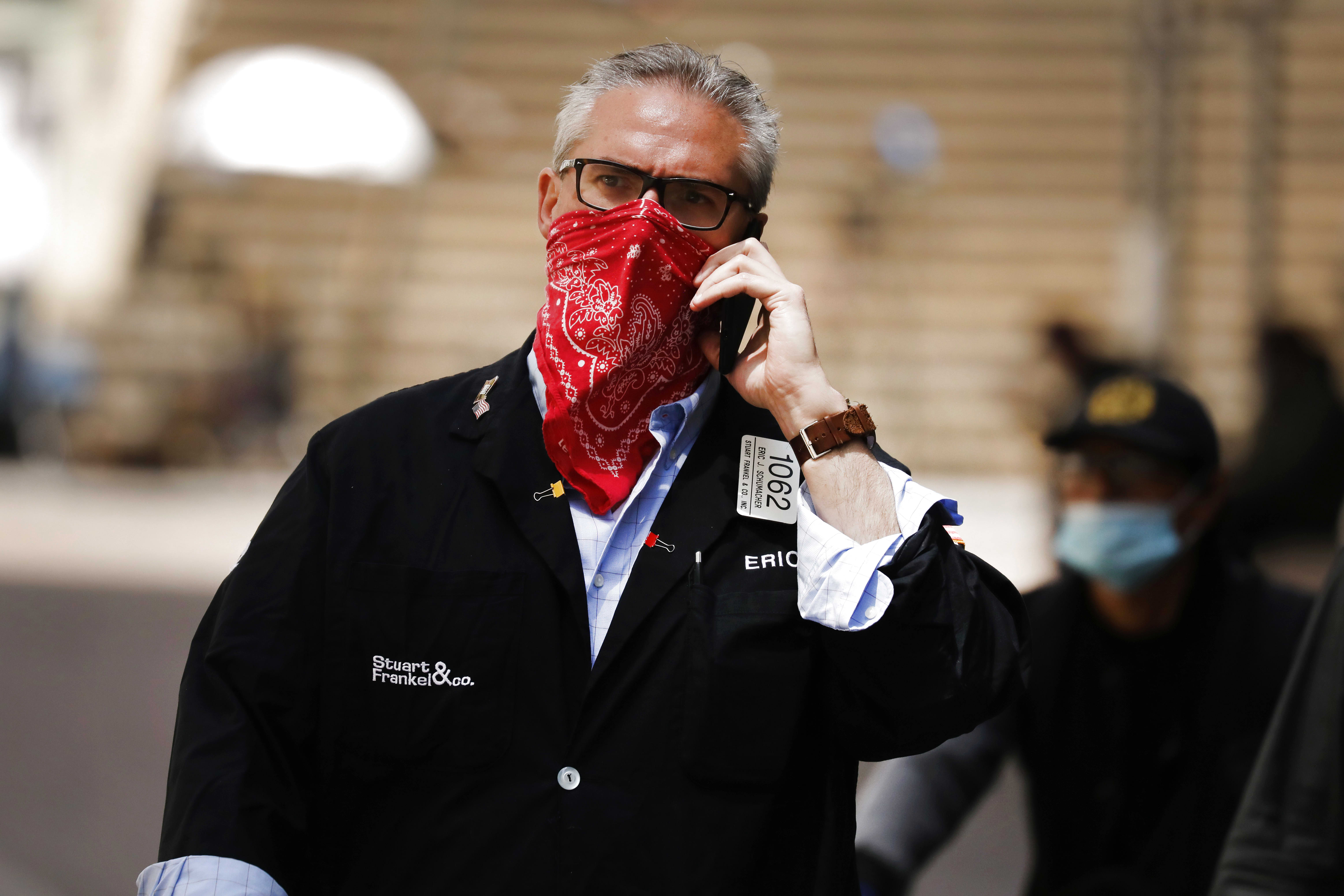A trader walks by the New York Stock Exchange (NYSE) on the first day that traders are allowed back onto the historic floor of the exchange on May 26, 2020 in New York City.
Spencer Platt | Getty Images
Traders baffled by the unprecedented market whipsaw are scrambling to buy protection against more rough sledding ahead.
It’s only June, and investors had already experienced the fastest bear market in history followed by the greatest 50-day rally ever. As fears of a drastic pullback intensified, it’s become four times more expensive to hedge against more losses in the S&P 500 than before the coronavirus landed.
The price of S&P 500 three-month 5% out-of-the-money put options, a standard portfolio protection, went from 1.3% of the S&P 500 spot price in December, to 2.9% last week and just under 5% on Thursday, according to Stacey Gilbert, portfolio manager on Glenmede Investment’s derivatives team.
“How much does it cost to have hurricane insurance on a piece of land that had never had a hurricane — not very expensive. But it’s more expensive because we just had a hurricane,” Gilbert said. “It tells you how much the market has repriced the risk.”
Thursday’s swift reversal served as a reminder just how quickly things could go south again. After a nearly 50% bounce from the March bottom, the S&P 500 dropped nearly 6% on Thursday alone, suffering its worst day since March. Wall Street’s fear gauge — the Cboe Volatility Index — jumped nearly 50% Thursday to close at 40.79, marking the first time the gauge has crossed the 40 threshold since May 4.
“I was expecting a pullback in the 5% to 10% range, but I’ll be honest I didn’t expect it to happen all in one day,” said Randy Frederick, vice president of trading and derivatives at Charles Schwab. “I do think the market had reasons to bounce off that lows but not this much.”
Thursday’s losses came after signs of a second wave of the coronavirus emerged. Data compiled by Johns Hopkins University showed the number of new coronavirus cases has risen in states like Arizona, South Carolina and Texas as they continue their reopening process.
“All it took was a little selling pressure,” Gilbert said. “Once you had an experience where the market sold off 35% in 16 trading days … we are all going to be a little bit more shy when we start to see the weakness. That is a warp speed market, down and up. There can be some legitimate concerns of being caught on the wrong side.”
Volatility markets had been flashing an ominous signal. Before Thursday’s sell-off, the VIX futures curve showed a spike in the July contract, a signal that investors were bracing for massive price swings in the near term. VIX futures are tied to the Cboe Volatility Index, which tracks the 30-day implied volatility of the S&P 500 futures via options prices.
“The July time frame coincides with investors not entirely sure how the reopening of the U.S. was going to impact the market,” Gilbert said.
The anxiety is also shown in the S&P 500 year-end options, which are currently pricing in a 15% to 20% chance that the equity benchmark finishes 2020 back at the March lows, according to Gilbert.
Wall Street analysts overall are cautious about how much the market can go for the rest of this year. The consensus year-end target for the S&P 500 comes to 2,978 as of Friday, slightly lower than Thursday’s close of 3002.10, according to the CNBC Market Strategist Survey that rounds up 16 top strategists’ forecasts.
Subscribe to CNBC PRO for exclusive insights and analysis, and live business day programming from around the world.
